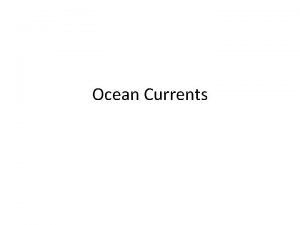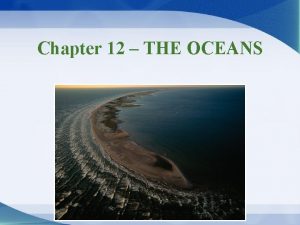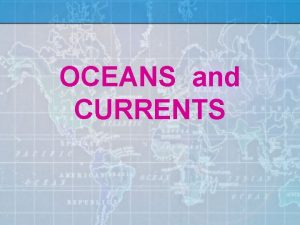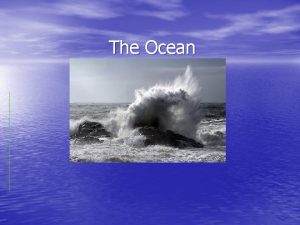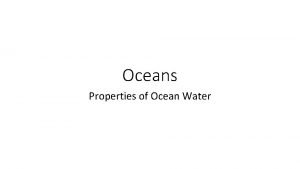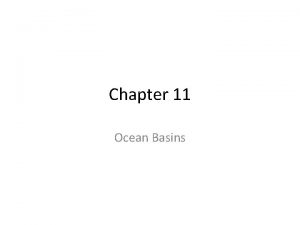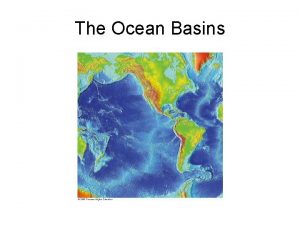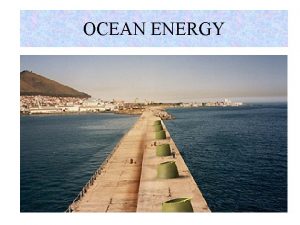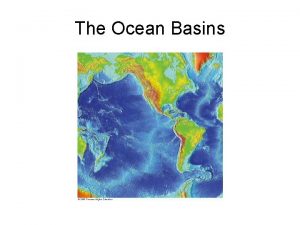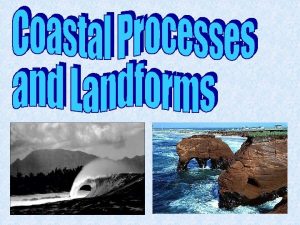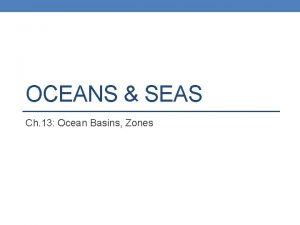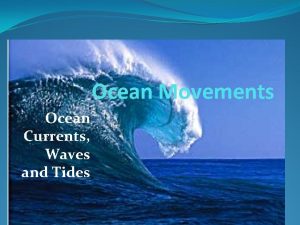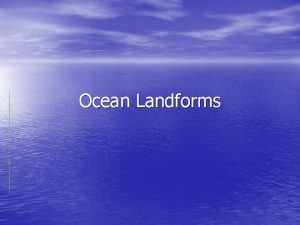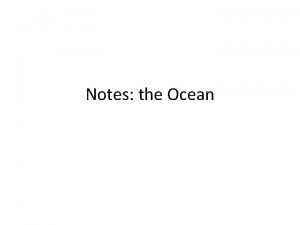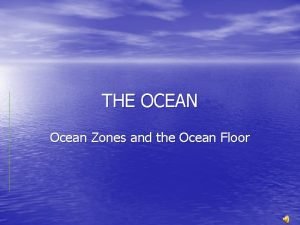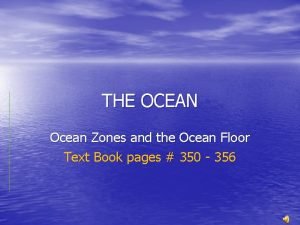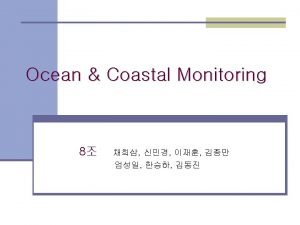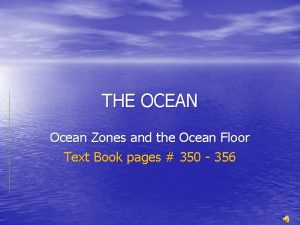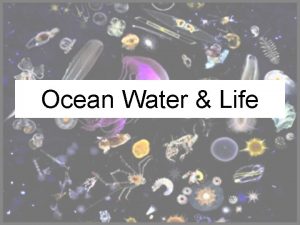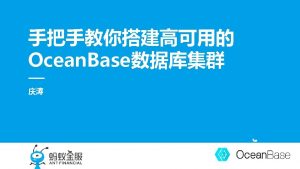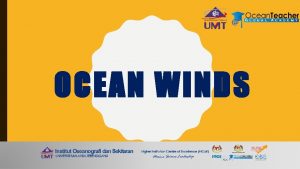Oceans Interactions Oceans 05 How does the ocean
























- Slides: 24

Oceans Interactions Oceans 05 How does the ocean impact the other spheres of Earth?

OBJECTIVES • At the end of this lesson you should be able to: • describe interactions of oceans with other spheres • discuss how ocean waves affect a coastline • describe how oceanic conditions in Florida impact human behavior

Where did the sand come from? From undersea mountains and the seafloor From rocks on the ocean floor From distant mountains and landforms

Earth’s Spheres • Hydrosphere • Biosphere • Atmosphere • Geosphere • Cryosphere

Geosphere List ways in which the ocean and geosphere interact

Geosphere • Beach nourishment projects protect natural shoreline environments. • Many in Florida


Biosphere • Organisms in the ocean depend upon each other • Life in the ocean plays a part in regulating atmospheric gases and parts of the rock cycle. • Biodiversity is threatened. We will look at Coral Reefs, Intertidal Zones and Deep Sea Organisms

Coral Reefs • • How do they form? Coral skeletons Prevents erosion of shoreline Affected by human activities – Coral bleaching due to increase in ocean temperature Interactions with atmosphere, geosphere and biosphere

Intertidal Zones • Organisms here adapted to daily changing conditions: wave action, rising tides, falling tides. • They help scientists learn how tides affect the biosphere.

Deep Sea Organisms • These organisms deal with lack of sunlight and great pressure.

Coelacanth- The Living Fossil Fish – Teaches scientists about evolution. Thought it died out 65 million years ago. In 1938 found living off Madagascar

Recreation

Human Behavior • Economic activities: encourage people to live and work near coast. • Shipping – transport of goods, local jobs

Hurricane • Massive tropical cyclone that spins around a low pressure center. – Can lead to storm surges, catastrophic flooding, loss of life, destruction and billions of dollars in losses

Climate and Atmosphere Do you notice a difference between the areas of ocean in the Northern Hemisphere versus the Southern Hemisphere? How does this difference affect climate?

Ocean Treasures • • How the ocean is used as a resource: Mining for iron, copper, zinc, etc… Oil drilling Salt Wind energy Seafood Oxygen

Mining

Salt

Wind Energy

Seafood

Oxygen

Assessment • Create slide show, video presentation, research paper with photos or a web site. • http: //water. epa. gov/type/oceb/index. cfm • http: //www. noaa. gov/ • http: //seawifs. gsfc. nasa. gov/ocean_planet. ht ml • http: //www. flseagrant. org/

Introduction: Identify the ocean resource. Introduce how the resource affects other Earth spheres, both positively and negatively, if appropriate. Multimedia: Use at least three images, diagrams, videos, or audio clips. Data: Describe how the ocean resource affects the rest of the hydrosphere, as well as the geosphere, cryosphere, biosphere, and atmosphere. Conclusion: Describe its overall value to society. Justify the protection of the resource by writing a summary paragraph explaining how the endangerment of that resource can cause detrimental effects locally or globally. Describe at least three ways to protect the resource. Resources: List at least three reliable resources from your research, including those for images, diagrams, videos, and audio clips.
 Convergent boundary definition
Convergent boundary definition Ocean ocean convergent boundary
Ocean ocean convergent boundary Convergent boundary
Convergent boundary Ocean ocean convergent boundary
Ocean ocean convergent boundary Chapter 15 ocean water and ocean life
Chapter 15 ocean water and ocean life Crack watc
Crack watc Convergent oceanic oceanic plate boundary
Convergent oceanic oceanic plate boundary Red and blue ocean strategy
Red and blue ocean strategy Subpolar low
Subpolar low What causes wind to blow brainpop
What causes wind to blow brainpop Hình ảnh bộ gõ cơ thể búng tay
Hình ảnh bộ gõ cơ thể búng tay Bổ thể
Bổ thể Tỉ lệ cơ thể trẻ em
Tỉ lệ cơ thể trẻ em Gấu đi như thế nào
Gấu đi như thế nào Chụp phim tư thế worms-breton
Chụp phim tư thế worms-breton Hát lên người ơi alleluia
Hát lên người ơi alleluia Môn thể thao bắt đầu bằng từ chạy
Môn thể thao bắt đầu bằng từ chạy Thế nào là hệ số cao nhất
Thế nào là hệ số cao nhất Các châu lục và đại dương trên thế giới
Các châu lục và đại dương trên thế giới Công của trọng lực
Công của trọng lực Trời xanh đây là của chúng ta thể thơ
Trời xanh đây là của chúng ta thể thơ Mật thư tọa độ 5x5
Mật thư tọa độ 5x5 101012 bằng
101012 bằng Phản ứng thế ankan
Phản ứng thế ankan








